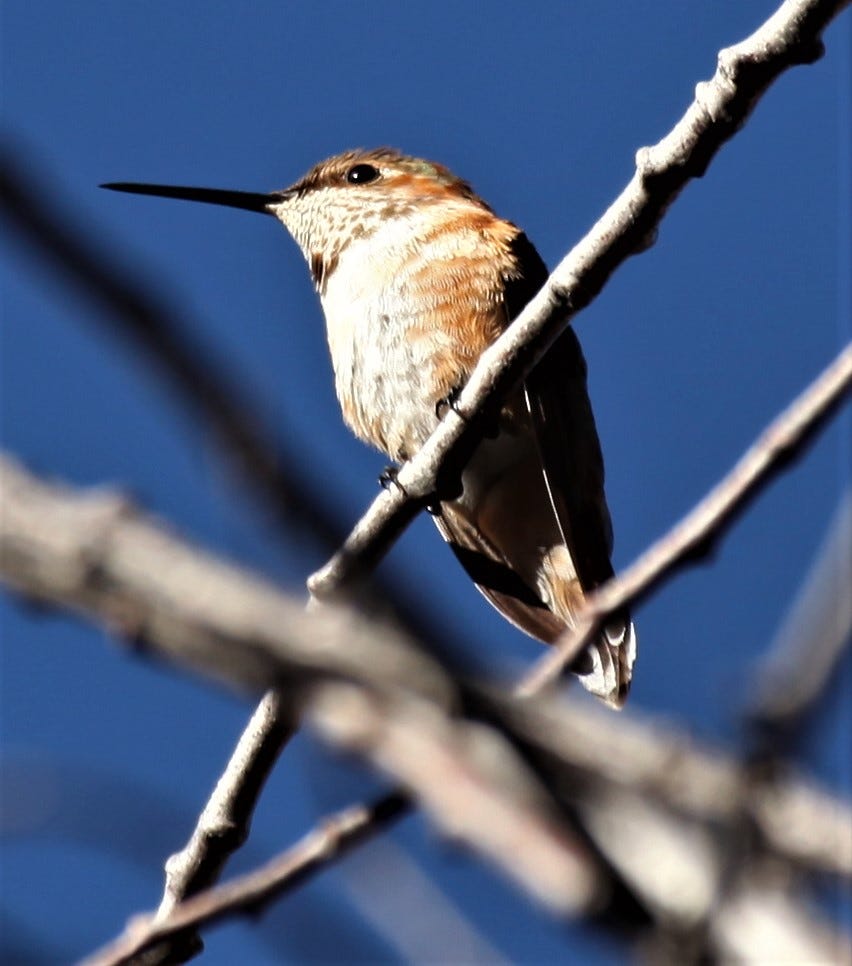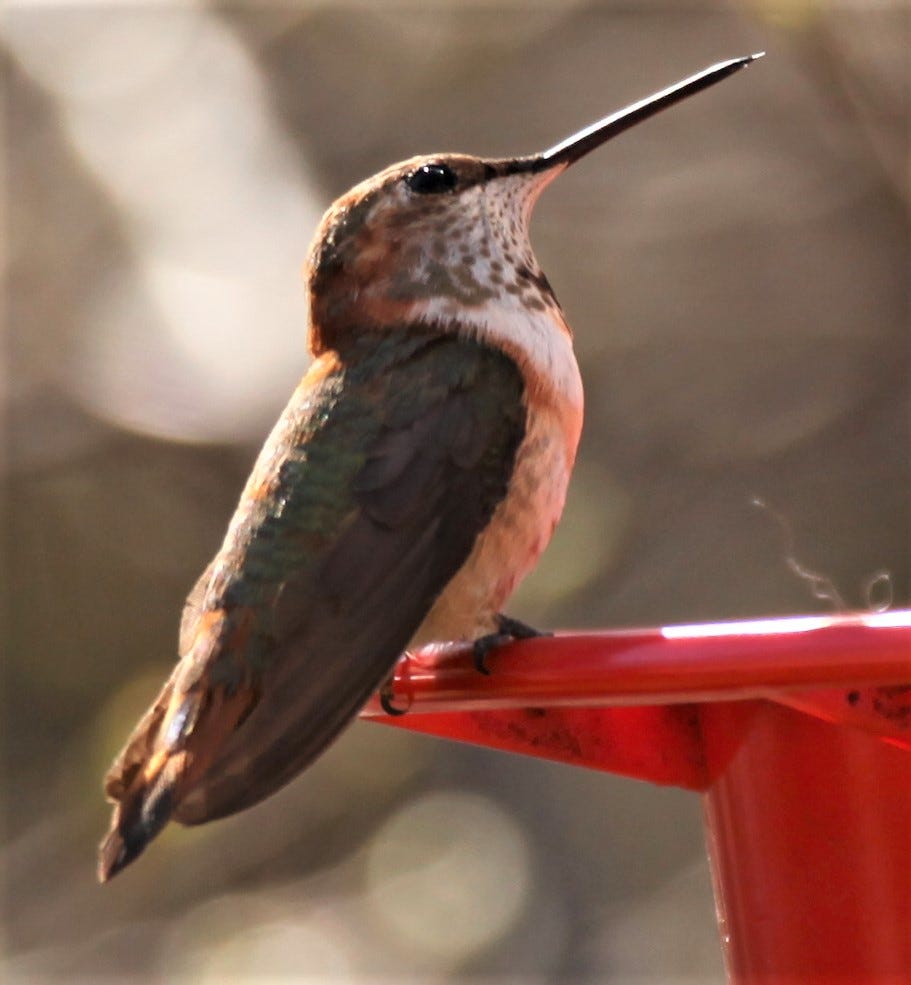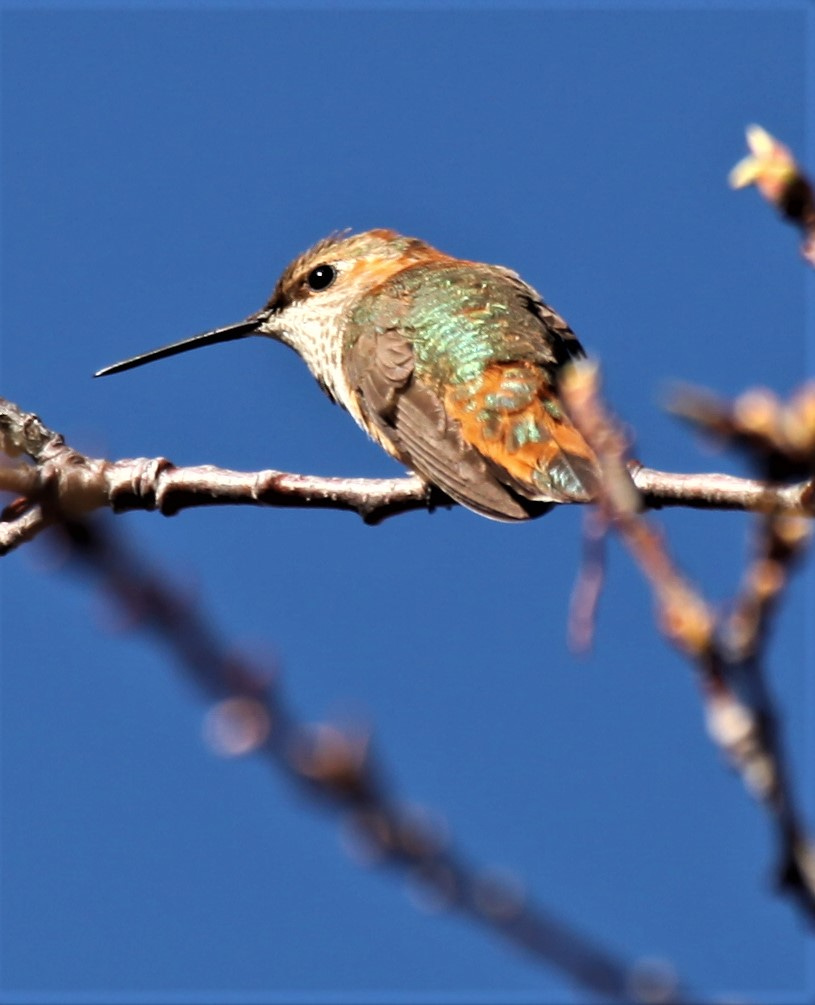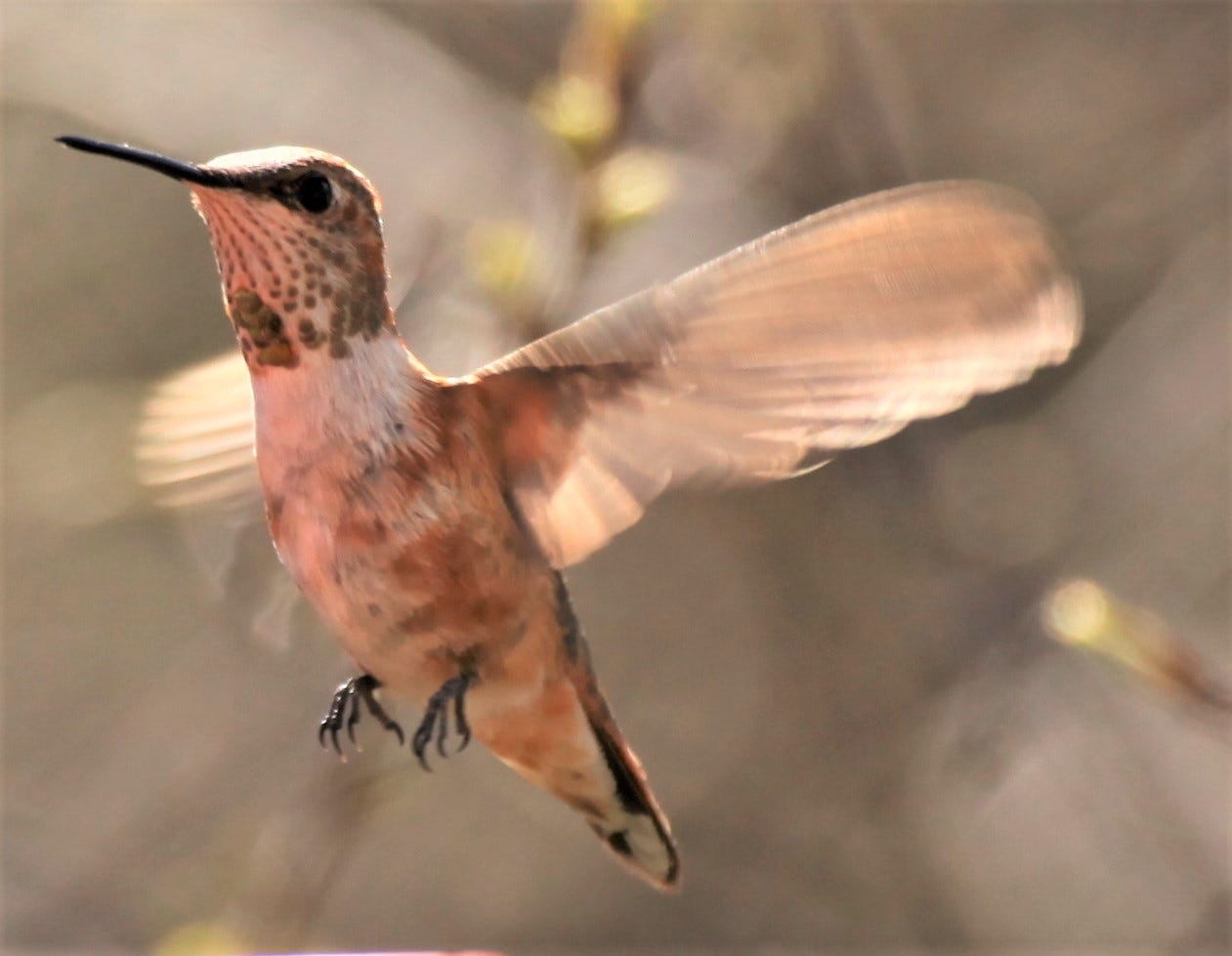February 5, 2023
After a winter of Anna’s, I hear a different pitch of wings at the hummingbird feeder. The timbre is slightly brighter. I grab the camera and catch a flash of rust on the flanks and tail. Rufous hummingbird? This early in the year? The yard is more than three weeks away from the earliest arrival date of these long-distance migrants as they head for breeding grounds in northwest Canada and Alaska from as far south as Oaxaca, Mexico.
I check with eBird and my rufous sighting is the only one in Arizona. Finding Birds in Southeast Arizona shows no record for them in early February.
This is what I love about birdwatching as citizen science. More data points. More breaking records.
eBird is an online database of bird observations for everyone from ornithologists to enthusiasts of our feathered denizens. From keeping a simple yard list to listing species at hotspots across the globe, the crowdsourcing website, a project of the Cornell Lab of Ornithology and Audubon, allows users to track their bird sightings while others watch in real time. And it has tools for organizing lists by place, date, location, and species. Data administrators, volunteers who are expert local birdwatchers, review your postings for accuracy.
Citizen science—everybody can do science! And I do, even in my pajamas. From documenting my everyday encounters with plants and animals on iNaturalist to keeping track of precipitation on Rainlog.org to even measuring my temperature with my Kinsa Smart Thermometer, which, unlike the Bill Gates’ microchip implant (kidding), actually uploads anonymously from my smartphone to a central database. In this way, the company—whose data is available from their website to anyone—can stay on top of the flu season and any coronavirus outbreaks, in greater geographic detail than public health officials.
With focuses on education, research, conservation, climate change, and biodiversity across the world, these citizen science portals unleash my inner nerd. If there was an app for documenting the growth of my toenails, I’d download it to my smartphone. And, like documenting the first rufous hummingbird to cross into Arizona this year, I’m sure I’d break records with my extraordinary keratinous corn chips.
Thanks for subscribing! More to come as we keep looking forward to migration 2023!







It's that time of year. The fun hummers start coming back!
That’s really cool that you can hear the difference in the hummingbirds wings.